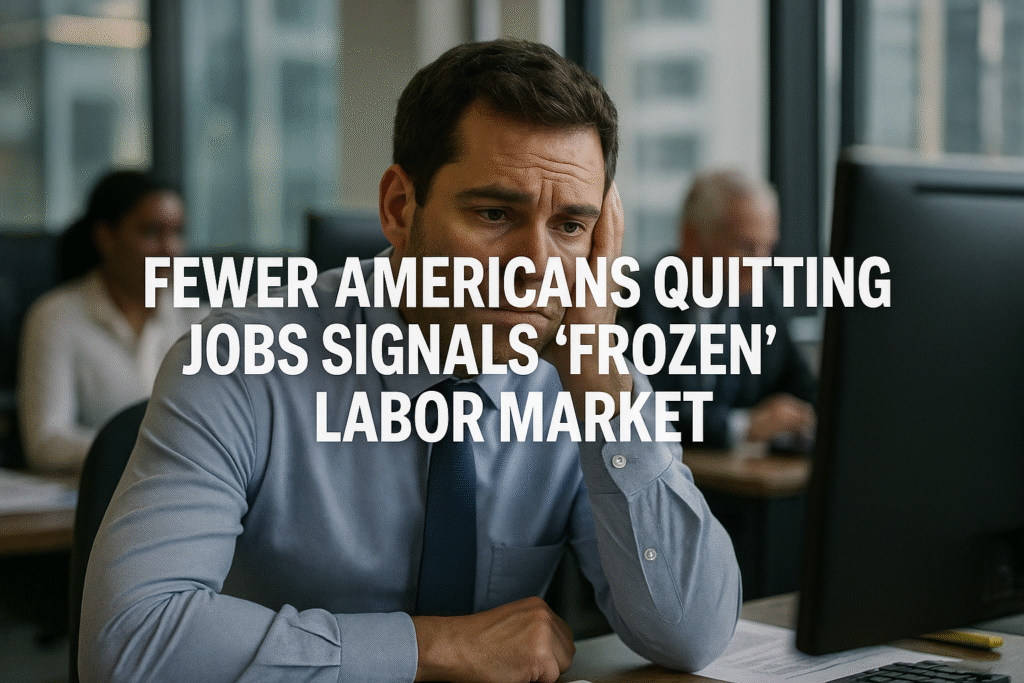By Harshit, Washington D.C., September 25, 2025 — 09:45 ET
Fewer Americans are leaving their jobs, and hiring has slowed significantly, creating a labor market that experts describe as “frozen” with limited mobility. Economic uncertainty is prompting workers to remain in their current roles, even amid growing dissatisfaction, a trend some analysts call “job hugging.”
Economic Growth: Labor Market Slows
Since April 2024, the U.S. economy has shed approximately 1.2 million jobs. Hiring activity has slowed to its lowest pace in over a decade, excluding the pandemic period. The quits rate—a key indicator of worker confidence—has fallen to roughly 2%, a level not commonly seen since early 2016.
“This is a reflection of the anxiety about the direction of both the economy and the labor market,” said James Atkinson, vice president of thought leadership at SHRM, a professional group for human resource management. “I think that is part of what’s keeping people in jobs.”
Inflation and Economic Uncertainty
Workers are increasingly prioritizing stability over potential gains from switching jobs. During previous periods of economic confidence, such as the Great Resignation, employees frequently left roles for higher pay or better opportunities. Today, slowed wage growth and rising living costs are discouraging risk-taking, leading employees to cling to their current positions.
Matt Bohn, a senior client partner at consulting firm Korn Ferry, noted, “Wage growth has cooled, job-switching premiums have shrunk, and a lot of workers worry that their pay won’t keep up with rising costs. So I think they’re clinging to stability in a time of uncertainty.”
Market Reactions: “Job Hugging” and Productivity
Consulting experts describe this behavior as “job hugging,” where employees remain in roles despite disengagement. While this may protect individuals from immediate financial risk, it has wider implications for employers.
Experts warn that widespread job hugging can reduce productivity, stifle innovation, and hinder long-term workforce development. Companies may see costs rise due to disengaged employees, while talent pipelines and skills development slow down.
Policy and Employer Strategies
The trend has prompted organizations to rethink retention strategies. Employers may need to address worker dissatisfaction proactively, including offering career development, flexible work options, and competitive compensation, to prevent hidden disengagement from undermining performance.
Meanwhile, policymakers continue to monitor employment data closely, balancing measures to stimulate job growth against concerns about inflation and broader economic stability.
Outlook and Analysis
Analysts caution that the frozen labor market is a sign of underlying economic stress rather than confidence. While headline unemployment rates remain relatively low, the stagnant quits rate suggests that many workers are avoiding change despite dissatisfaction.
“Job hugging masks disengagement,” said Bohn. “It’s costing employers billions and weakening productivity, innovation, and future workforce development.”
Economists predict that if economic uncertainty persists, the labor market may continue to function differently than in prior recovery periods. Workers may stay put, but at the cost of long-term career growth and company performance.







